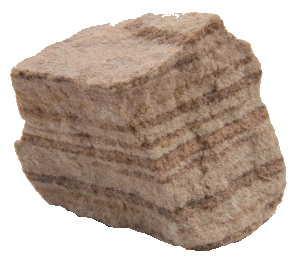
This type of rocks forms at the low temperature and pressure at the Earth’s surface by consolidation (diagenesis) of sediments, after they are transported and deposited/accumulated by water, wind or ice in a basin. Sediments and sedimentary rocks constitute less than 1% of the Earth’s mass, but they cover more than 80% of Earth’s surface and contain most of our fluid resources (groundwater, natural gas, petroleum). Most sediments accumulate in the sea, covering the oceanic basement made of volcanic rocks; sediments also occur on continents, in basins as well as on shelves and slopes developed in response to plate tectonics. More than 75% of the sediments on Earth’s surface are detrital particles produced by processes of physical and chemical weathering, happening often together at the Earth’s surface, which break the pre-existing rock (igneous, metamorphic, sedimentary) into smaller grains. Sedimentary rocks formed of detrital particles are referred to as terrigenous or siliciclastic sedimentary rocks. The other types of sediments are those created by organisms (organic or biogenic sediments) or by inorganic precipitation of minerals from solutions (chemical sediments). Sedimentary rocks of organic or mixed organic-chemical origin form a group called biochemical sedimentary rocks. Sedimentary rocks formed largely of minerals precipitate without the life activity of organisms form a group called chemical sedimentary rocks. For a summary of the classification schemes commonly used for the sedimentary rocks click here.
